If It Flies It Dies Part II
By Jim Naughton
Introduction
In Part One we looked at the catalog of PACT air defense systems in Team Yankee. Now we’ll discuss how ADA works, look at the threat, and determine what ADA units meet the threat.
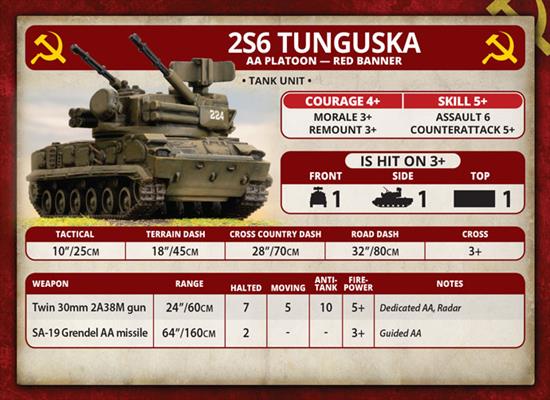
Air Defense Mechanics
The game mechanics for air defense weapons are straightforward. They can fire in their own turn, and they can fire in the enemy turn to preempt an enemy air unit’s attack. If they fire in the enemy turn, they cannot fire defensive fire against assault, fire their air defense weapons in their next turn, or assault in their next turn. Sometimes you can manage to shoot in your own turn and then in the enemy turn but not the reverse.
This disproportionately affects Tunguska because the weapon system includes two air defense weapons. When World War Three: Soviets https://www.flamesofwar.com/hobby.aspx?art_id=7154 was first published, it seemed that you could fire one of the systems in the enemy turn and one in their own turn. A few weeks after publication, an update in FM101 https://www.team-yankee.com/Default.aspx?tabid=908&art_id=4846&kb_cat_id=268 dispelled that myth. Now machine guns are the only thing that can fire after using a primary weapon against aircraft in the enemy turn.
As with all direct fire, the procedure is identify the target’s TO-HIT number, adjust for TERRAIN, roll dice equal to rate of fire, and note hits. The target rolls an aircraft save, then the attacker rolls a firepower (FP) check. The D6 is used for all these die rolls. In our case, ‘manual tracking’ adds one to the TO-HIT number vs jets.
There are a couple of twists. Aircraft (and their targets) can never be ‘out of sight’ unless a landed helicopter. Only TALL TERRAIN provides cover for flying aircraft/from flying aircraft, and then only if within 4” of the air defense weapon…but a tricky player can position his ADA teams in woods within 2” of the edge and be concealed from airplanes but not impeded in firing. Smokescreens function as if they were TALL TERRAIN (it’s in FM101) and give concealment.
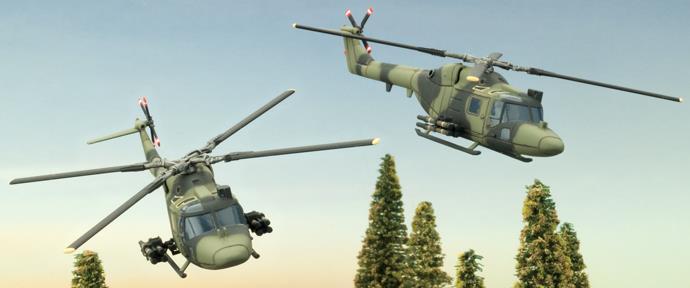
Hunter/killer (H/K) helicopters also can gain concealment by being within 4” of TALL TERRAIN along line of sight to ADA teams. And remain Gone to Ground until they fire. They pay for this by being unable to move and shoot.
ADA combat is about choices. A NATO H/K helicopter decides to take a shot at my T80. I can ride out the shot and attack the helicopter in my own turn hitting 5+. Or I can try to shoot him down right then, hitting 6+ (he is both CONCEALED AND GONE TO GROUND).
Strike aircraft never stay on the table, so you must shoot them in the opponent’s turn.
AAAV are the most flexible weapons for dealing with helicopters because you can sometimes drive to a position where the H/K helicopter loses concealment and thus gone-to-ground. Now the TO-HIT number is 4+, effectively tripling the weapon’s lethality. Or drive into range.
The fundamental choices are how much ADA do I need and what systems do I buy?
ASSESSING THE THREAT
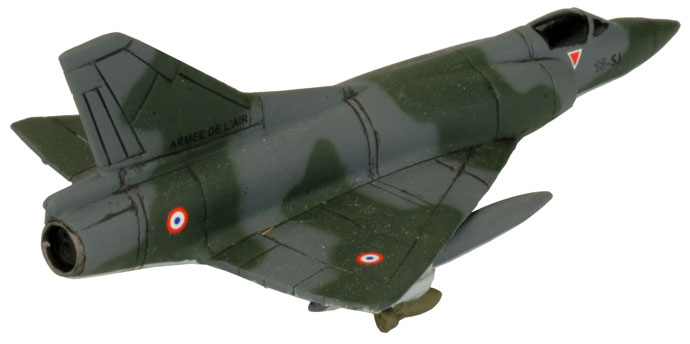
There are two basic threats – strike aircraft and attack helicopters. Within the class ‘attack helicopters’ we see several modes of attack. The most popular is missiles. Why? DANGER CLOSE rules for aircraft require an 8-inch separation between targets of aircraft teams and other friendly teams, including aircraft teams of different units. Strafing passes/rocket attacks are rare because they block other teams from firing. So are usually allocated to high-value ADA units well in the backfield. And the result must be worthwhile because the helicopters will probably be shredded by surviving AA and ATGM.
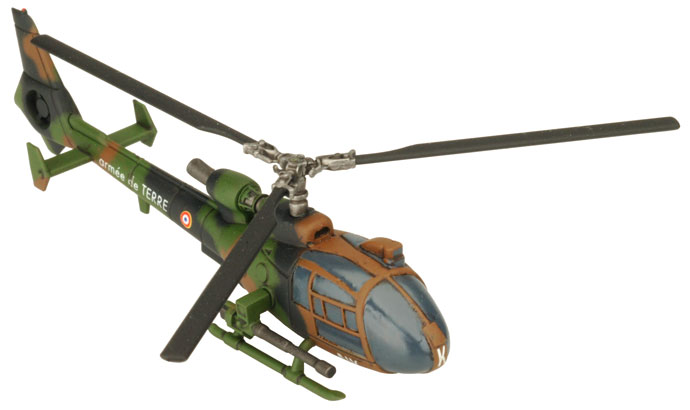
The French 20mm ‘Gunslinger’ Gazelle prevents ADA from shooting it before it shoots. All other aircraft must submit to your ADA fire before rolling their attack.
The most serious threats are the Mirage, Tornado, and UK Harrier strike aircraft with their dispensers. They lay a SALVO template with AP=8 FP=3+ attacking top armor. They come in flights of four. I once kibbitzed a game between two friends and saw an unimpeded Tornado attack destroy a Soviet T72 battalion. Preventing that is critical. The US Harrier’s Rockeye weapon is not as lethal (particularly to tanks).
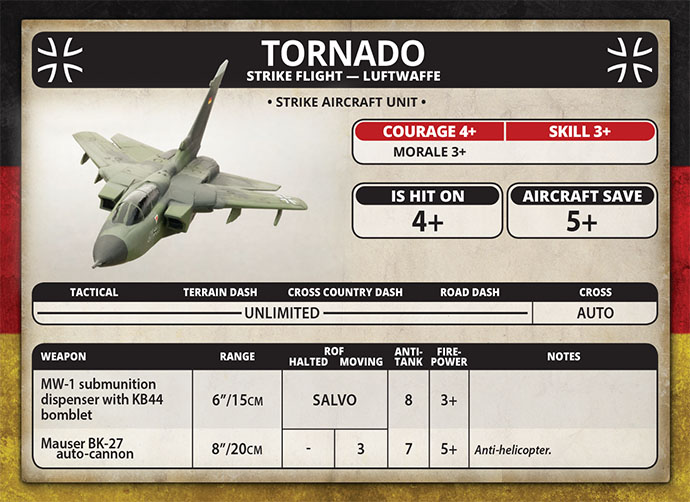
Other strike aircraft rely on missiles. The aircraft are available 50% of the time, the missile ROF is 1, and typically the hit percentage is 50%. Four-aircraft flights average one dead tank a turn. Annoying but survivable.
NATO H/K have flights up to four birds typically killing one team a turn. More importantly, they have to stay on the board after they fire. That makes them vulnerable to ATGM volleys – guided AT missiles can be lethal to helicopters when not doing their primary mission. Or AAAV can drive closer and light them up in your turn. Remember, if it’s up in the sky, you always have LOS!

Given that strike aircraft are only around half the time, weapons allocated to them are available to address helicopters when they’re absent. So the critical calculation becomes how many dice need I roll to destroy a flight of Tornados/UK Harriers? How many do I need to just reduce the flight to 2 birds, where they are forced to reroll hits?
THE MATH
Now I’ll introduce the MATH. I’m not going to roll dice physically or electronically, I’m going to use the EXPECTED VALUE of shooting one team and then determine how many teams of a given type are required to reach the lethality of four birds.
The NATO TO-HIT number is 4+. The Tornado and Harrier have Aircraft Saves of 5+ so a failed save is .667. The expected value of one dice throw is .5 x .67 = .33 failed saves. To convert that into kills, I have to multiply by the ROF and the firepower of the weapon stated as a decimal. Gecko tosses three dice and has FP=3+, or .67. So the expected value of shooting one Gecko is .67 (3 x .5x.67x.67).
Killing four NATO strike aircraft is going to require six Geckos. I can’t get six Geckos so other systems need to be on the table. TABLE 2 calculates the LETHALITY of TY PACT systems.

Note that the table is about strike aircraft. It assumes they’re out in the open and adjusts the Praga and Sparka for manual tracking. The same calculation would produce different results for H/K helicopters in their own turn (.167 TO-HIT across the board), or in my turn. Also, specific aircraft have different saves (A-10, 3+; Apache, 4+). And Arab helicopters have a base 3+ to hit. You can build this easily in a spreadsheet and tinker. But it doesn’t tell you what ADA systems to buy.
Leading us to another discussion: Cost Effectiveness.
COST-EFFECTIVENESS
AP cost is our discriminator. But the large number of possible targets confuses things. You can’t control the enemy so I’ll isolate the part of the lethality equation that is system-dependent. Rate of Fire and Firepower. Multiplying them together gives half of the lethality equation. I call this number Stored Lethality. It’s useful for any ADA system. Dividing by the AP Cost per model allows comparing system performance. Giving a measure of cost-effectiveness.

I have purposefully kept the range and notes in the table to remind us of the Manual Tracking issue versus strike aircraft and that Radar systems add 12” to the stated range. Does that alter effectiveness? Yes, but mainly on big tables facing Apaches. Everything else must come within 48” of the target and the dispensers have to be up close and personal – typically 6”. Keeping the guns close to the protected asset usually eliminates the range issue, particularly on 4’ x 6’ tables. The BTR-ZD, Praga, and Sparka reduce their SL by 33% against strike aircraft, making the Sparka equivalent to Shilka (when in range) and Praga a little less cost-effective than Shilka.
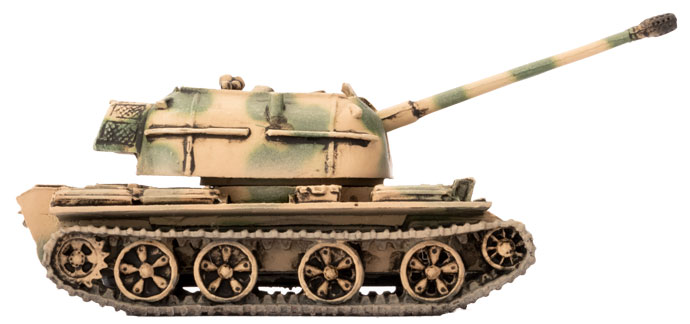
Note that Stored Lethality (SL) is generally larger for guns. If you don’t consider range an issue, the gun systems do a much better job of killing aircraft. And on a 4×6 table, it’s tough to stay out of range.
Now look at the SL per AP column. The best gun value is the Shilka. The Sparka and Praga only outperform it against helicopters within 16”. Its weakness is vulnerability – you get four models of Sparka or Praga or two Shilkas for two AP. Something to consider if fighting French.
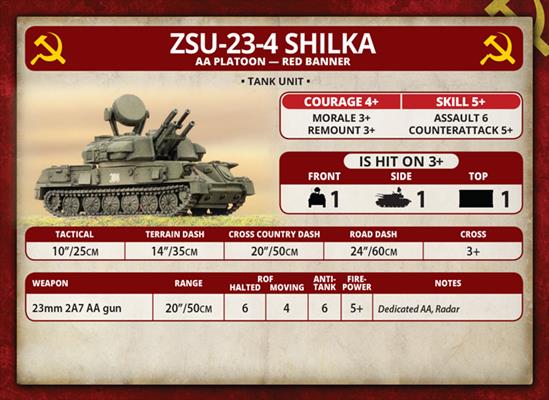
Tunguska, which showed so much potential, has been hamstrung by its high cost combined with the FM101 ruling. BTR-ZD suffers compared to all gun systems save Tunguska, but it is the only gun choice permitted the new Air Assault units in RED DAWN. Happily, the Air Assault Companies can take TWO Gremlin Teams instead of one.
The best missile value is the Gaskin. 4 models for two AP satisfies vulnerability issues, too. The Gecko enjoys great lethality but has a double weakness – it only gets a tank save and costs 2 AP per model. The infantry teams have an ‘extra value’ because they come with a transport vehicle – a BTR or BMP-1 essentially free or a BMP-2/3 for a point extra. And they don’t compete for anybody else’s slot in the Force Diagram.
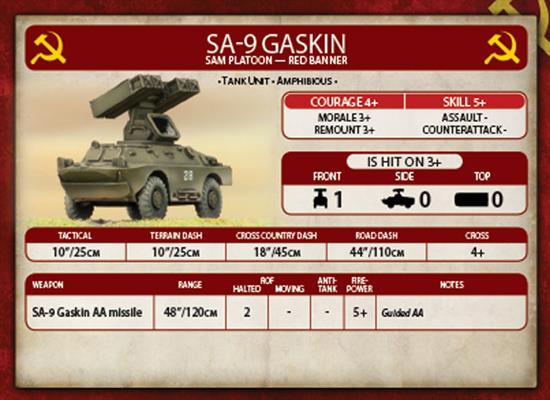
As a side note, if you buy Czech 4-packs of ZSU-23 or SA-13, or any SA-8, you get a small discount – pushing Shilka ahead of Praga and making Czech Gecko and Gopher equivalent to Gaskin.
BUYING THE FORCE
We need to reduce a Tornado strike to zero, but would accept a reduction by two planes making it reroll hits. That is the classic ‘required’ and ‘desired’ limits of a Required Operational Capability, or ‘ROC’ in the system acquisition business.
Two dead birds required, four dead birds desired. Referring back to Table 2, I find six Shilkas, five Tunguska, six Geckos, 12 Gophers, 18 Gaskins etc. are necessary to meet the desired threshold, and half that are needed to meet the required threshold. Both Tunguska and Gecko are prohibitively expensive – at 2 AP a model, you are sacrificing a lot of tanks to protect the others.
Optimizing is a linear programming problem. The linear programming problem maxima and minima are always found at the intersections of constraints. And I figured the Soviets had already solved the problem, so I cheated starting with 4 Shilkas and 4 Gaskins. A regimental battery. That yielded 3.56 kills. As I usually build a Gremlin team for every infantry company, this adds .67 to 1.00. Spending 8 AP on air defense. I usually can count on a contribution from my tanks (less since V2 but still there – the reroll hits makes their effective FP = .11).
Remember when building a force that every battalion except the Soviet Air Assault Battalion has a slot for a gun system (ZSU-23, as well as M53/59 for Czechs, ZSU-57 for Syrians/Cubans and 2S6 for Soviets) and a missile system (SA-9 or SA-13). Every infantry company MANPADs. Every PACT force has one additional ADA slot where SA-8, SA-9, and SA-13 compete.
So one good answer is four Shilkas, four Gaskins, and some Gremlins. There are others nearly as good but they don’t typically involve Geckos and they never involve Tunguskas. You have to put a high value on long-range missiles before Geckos are ‘worth their points.’ And accept hideous vulnerability.
Great news, using this combination against H/K Helicopters will average 1.3 dead helicopters per turn (and 2.6 if you wait until your own turn to shoot).
RED HERRING: GROUND-TO-GROUND CAPABILITY
Much discussion focuses on engaging ground targets. If you buy gun systems with this in the back of your mind, you will probably use them that way – and find enemy aircraft chopping up your toys or find AAAV wrecked when you need them. AAAV need to do their job first before trashing ground targets. Or buy Shilkas for every formation so the enemy has to work very hard to destroy your AAA capability.
CONCLUSION
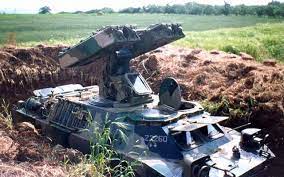
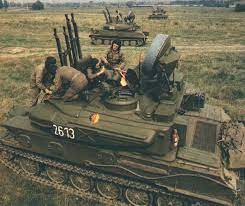
At the present time, the ‘best value’ PACT ADA force is Shilkas and Gaskins. Other than as a dedicated assault gun, Tunguska disappoints. Gecko is a niche weapon for large points values protecting expensive targets. Gophers can substitute for Gaskin with a slight degradation in effectiveness. Don’t forget Gremlins. If playing VDV Formations from Red Dawn, don’t forget your BTR-ZD.

Great overview Jim. Excellent how you build this all up and then winded it down to factor the right types. Glad I intuitively decided to go for the Shilka/Gaskin option. As you said, the Soviet Regimental weapons of Choice ! Thanks again for this must have article!!!
Thanks. I stumbled into the right combination too after trying Shilka+Gopher. After Volksarmee published bringing SA-9 I never played the Gophers again. One day I decided to figure out why…and the question keeps getting asked on social media. Leading to the article. Of course BF may wake up and figure out why they aren’t selling Tunguska…and change everything.
Thanks for nothing, Jim (joke, HAH!) Now my Harriers have to dodge more AA from the folks that read this…..
Sorry buddy. Like the artist says about the statue in the marble, the math was always there. I just found it…
I don’t really get the talk about lethality of atgm against air. I mean they are mostly rof 1 weapons so firing at air +1 to hit, mostly you are not hitting atleast against NATO air. They are move or fire so, something like ifv;s who should be moving around can’t, they mostly have less range than dedicated aa missiles. Least of all shooting at air with lesser odds, prevents you from shooting at atgm primary targets. Land vehicles. I get that as a plan b option, but I really havent seen anything to prove the hype.
Sorry I didn’t elaborate. ATGM can only fire in the owning players turn, which means they can only shoot helicopters. Yes, they are +1 to hit, but after a H/K helicopter fires, it loses its bonus “Gone to Ground” and thus is one number easier to hit. A wash. Move-and-shoot ATGM (T64, T72B, T80) have the opportunity to take the H/K’s concealment out of the equation. And sometimes you can’t hide from everything. Assuming the H/K remains concealed, its to-hit number is 6+. A six-pack of BMP-1s can shoot 44″, will average one hit and that hit produces a kill 44% of the time. My usual army has 18-24 BMPs and 7-10 Raketen panzers for an average of five hits which yields 2.2 expected kills a turn. And because my opponent is hiding his light armor, BMP-1s frequently have nothing better to than shoot H/K. Hinds are three times easier to hit and Iran/Iraq birds are 3+ base so twice as easy to hit, as are H/K if you can get a non-concealed LOS. So you have a choice, and if you want to take an enemy H/K unit out of the equation, remember your ATGM
Thanks for the answer, good points. Also as a NATO player many times it gets left out of the equation, simply that you have fever atgms and so many ground targets. And when you don’t use the ability many times you start to forget to use it.